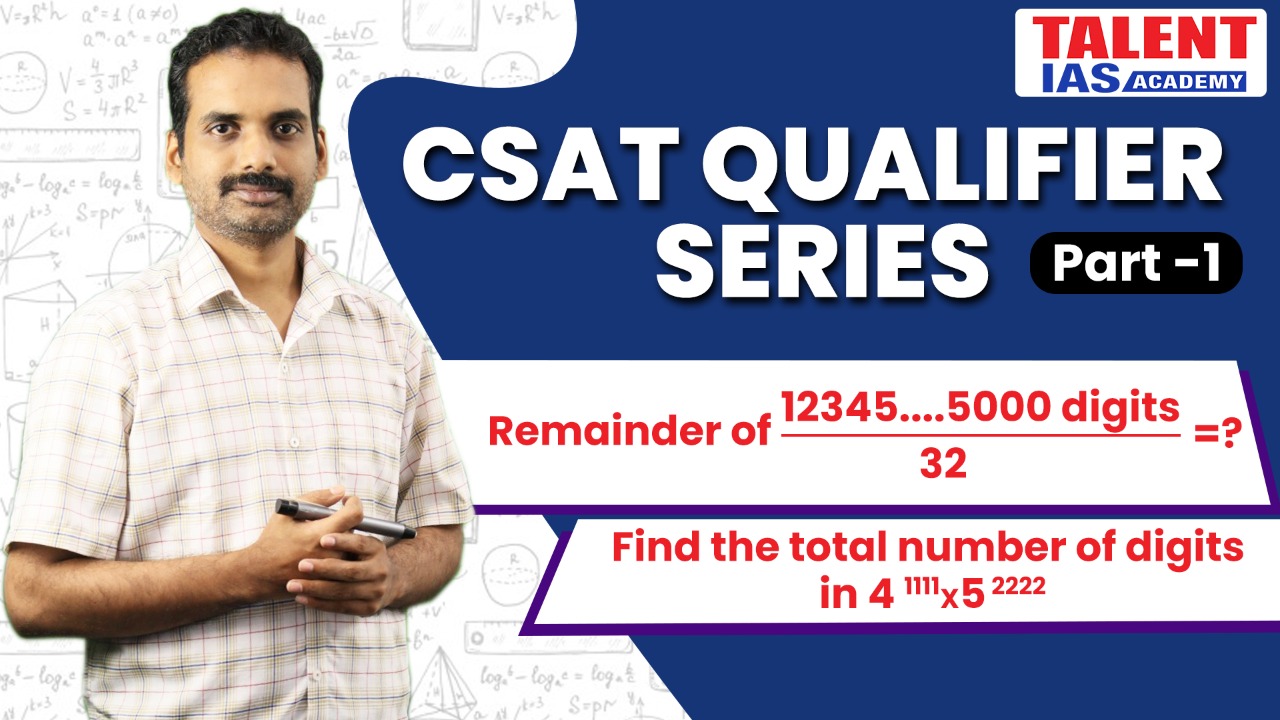Micro Finance Institutions (MFIs)
Relevance:
A study by PricewaterhouseCoopers (PwC) and Association of Microfinance Institutions of India says that Micro Finance Institutions (MFIs) to play leading role in India’s economic growth.
About Microfinance:
- It is a form of financial service which provides small loans and other financial services to poor and low-income households without access to banking services.
- Microloans, micro-savings, and micro-insurance are some of the services including microfinance.
- All loans below ₹ 1 lakh can be categorized as microloans in India.
- In India, a microfinance loan is described as a collateral-free loan issued to a household with an annual income of up to ₹3 lakhs.
- Malegam Committee (2011) helped establish microfinance as a legitimate asset class.
- Microfinance Delivery Model in India includes –
- Scheduled commercial banks lending both directly as well as through business correspondents (BCs) and self-help groups (SHGs).
- Cooperative banks.
- Non-banking financial companies (NBFCs).
- Insurance and credit card companies
- Telecommunications and wire services
- Post offices and other points of sale – offering new possibilities.
- Significance –
- Women’s empowerment by routing credit directly to women.
- Provision of credit to poor without need for collateral.
- Promote financial inclusion and Employment generation.
Microfinance is the provision of financial services to people of low-income groups. This includes both the consumers and the self-employed. The service/services rendered under microfinance is/are: (2011)
- Credit facilities
- Savings facilities
- Insurance facilities
- Fund Transfer facilities
Select the correct answer using the codes given below.
- 1 only
- 1 and 4 only
- 2 and 3 only
- 1, 2, 3 and 4
Reference: Economic Times
Inland Waterways in India
Relevance:
Chairman of Inland Waterways Authority of India (IWAI) stated India eyes ₹35,000 Crores investments by 2047 to create waterways network that will include developing waterways and jetties to improve navigable capacity of Indian rivers.
Inland waterways:
- India has an extensive network of inland waterways in form of rivers, canals, backwaters and creeks that may supplement over-burdened railways and congested roadways.
- To promote Inland Water Transport (IWT), 111 waterways (only 13 NWs are operational) have been declared as National Waterways (NWs) under National Waterways Act, 2016.
- Benefits – Eco-friendly and cheaper (less fuel consumption per tonne-km), better connectivity to hinterland, require relatively less maintenance etc.
- Challenges – Decreased water flow due to industrial, agricultural and other uses, inadequate water channel depth, Excessive Siltation, low technology adaption etc.
- Measures Taken –
- Inland Waterways Authority of India Act, 1985
- Indian Vessels Act of 1917 (as revised in 2007)
- Jal Marg Vikas Project (JMVP) aims at capacity augmentation of navigation on National Waterway-1 (NW-1), along the river Ganga.
- Project Arth Ganga to revitalise economic activity in Uttar Pradesh, Bihar, Jharkhand and West Bengal.
- Sagarmala Project aims to expand inland waterways to drive industrial development.
- National River Linking Project (NRLP)
- Recent initiatives –
- PANI (Portal for Asset & Navigation Information) provides detailed information on various waterways.
- CAR-D (Cargo Data) Portal, a web based portal for all cargo and cruise movement data of NWs.
- Ro-Ro/Ro-Pax Service Commenced in Various NWs.
- World’s Longest River Cruise-MV Ganga Vilas (From Varanasi, UP to Dibrugarh, Assam via Bangladesh) with an aim to boost river cruise tourism.
Inland Waterways Authority of India:
- Established – 1986
- Aim – For the development and regulation of inland waterways for shipping and navigation.
- It primarily undertakes projects for development and maintenance of IWT infrastructure on national waterways through grants received from the Ministry of Shipping.
- Headquarters – Noida (Uttar Pradesh)
Reference: Economic Times
Asian Waterbird Census
Relevance:
A survey conducted as part of the Asian Waterbird Census (AWC) 2023 shows the populations of some migratory waterbirds, especially duck species visiting the Alappuzha region of Kerala are falling.
Key Highlights:
- Duck species like Northern Shoveler, Common teal and Eurasian wigeon, sighted in the previous surveys, were totally missing this time around.
- Climate change has affected the number of birds visiting the region.
About Asian Waterbird Census:
- AWC, an annual event, is a citizen science programme supporting conservation and management of wetlands and waterbirds.
- AWC is part of the global International Waterbird Census (IWC) coordinated by Wetlands International.
- AWC in India –
- It was initiated in the Indian subcontinent in 1987.
- In India, AWC is jointly coordinated by the Bombay Natural History Society (BNHS) and Wetlands International.
- BNHS –
- It is a non-governmental organization engaged in conservation of biodiversity research.
- Designated as a Scientific and Industrial Research Organization (SIRO) by Department of Science & Technology.
- Contributions of AWC –
- Convention on Migratory Species (CMS), also known as Bonn Convention, provides a global platform for conservation of migratory animals and their habitats.
- Implementation of East Asian-Australasian Flyway Partnership Initiative (EAAFP) and Central Asian Flyway (CAF) Action Plan.
- EAAFP is an informal and voluntary initiative, to protect migratory waterbirds.
- CAF covers area of Eurasia between Arctic and Indian Oceans and associated island chains. Geographically it covers 30 countries of North, Central and South Asia and Trans-Caucasus.
- BirdLife International’s Important Bird Area Programme.
- IUCN/BirdLife International’s Global Species Programme (Red List).
- Wetlands International’s Waterbird Population Estimates programme
With reference to a conservation organization called ‘Wetlands International’, which of the following statements is/are correct? (2014)
- It is an intergovernmental organization formed by the countries which are signatories to the Ramsar Convention.
- It works at the field level to develop and mobilize knowledge and use practical experience to advocate for better policies.
Select the correct answer using the code given below:
- 1 only
- 2 only
- Both 1 and 2
- Neither 1 nor 2
Reference: The Hindu
Local Bubbles
Relevance:
Researchers from the Center for Astrophysics (CfA) | Harvard & Smithsonian have generated a 3D magnetic map of the cavity called Local Bubble that could reveal the universe’s secrets, including questions about the origins of stars.
About Local Bubbles:
- A 1,000-light-year-wide cavity or a superbubble.
- A large, low-density region in the interstellar medium (ISM) of our galaxy, the Milky Way. ISM fills the space between the stars.
- It contains the closest of celestial neighbours and among others, the Local Interstellar Cloud (which contains the Solar System), the neighboring G-Cloud, the Ursa Major Moving Group (the closest stellar moving group) and the Hyades (the nearest open cluster).
- There are many other superbubbles that exist in the Milky Way.
- It is a cavity that is thought to have been created by a series of supernovae explosions that occurred about 30 to 50 million years ago.
- Resemblance – An enormous slice of Swiss cheese.
- 3D Map of a Gigantic Cavity of Local Bubbles –
- Used Gaia and Planck space based observatories launched by the European Space Agency (ESA).
- Gaia was used to identify the location and local concentration of cosmic dust which helped them trace the boundaries of the Local Bubble.
- Planck provided information on the magnetic alignment of cosmic dust which indicated the orientation of the magnetic field acting on the dust particles.
About Supernova:
- It is a powerful and luminous explosion that occurs at the end of the life of a massive star.
- It is caused by the collapse of the core of the star, which can trigger a massive release of energy.
- It enriches the interstellar medium with heavy elements and propagate cosmic rays.
- 2 types –
- Type I:
- Thermonuclear explosion of a white dwarf star that is part of a binary system.
- The white dwarf accretes material from its companion star, and when its mass exceeds a certain limit, it becomes unstable and detonates.
- Type II:
- Gravitational collapse of the core of a massive star.
- When a star has exhausted the nuclear fuel in its core, its outer layers collapse inward, and the core becomes incredibly hot and dense.
- Impacts –
- Outshine an entire galaxy for a brief period of time
- Explosion debris can cause the formation of nebulae, dust and heavy elements.
- Type I:
Recently, scientists observed the merger of giant ‘blackholes’ billions of light-years away from the Earth. What is the significance of this observation? (2019)
- ‘Higgs boson particles’ were detected.
- ‘Gravitational waves’ were detected.
- Possibility of inter-galactic space travel through ‘wormhole’ was confirmed.
- It enabled the scientists to understand ‘singularity’.
Reference: Down to Earth
Global Overturning Circulation (GOC)
Relevance:
A team of researchers from the Goa-based National Centre for Polar and Ocean Research and the School of Earth, Ocean, and Atmospheric Sciences in Goa University reconstructed the past deep-water circulations of the Indian Ocean.
News Summary:
- Global Overturning Circulation (GOC) is an equatorward transport of cold, deep waters and poleward transport of warm, near-surface waters.
- It is responsible for transport of carbon and heat among ocean basins and between ocean and atmosphere.
- GOC is a system of 2 connected overturning cells –
- Upper cell is linked to formation of North Atlantic Deep Water (NADW) and its shallower return flow to form Atlantic Meridional Overturning Circulation (AMOC).
- Lower cell (referred as Southern Ocean Meridional Overturning Circulation) is associated with formation of Antarctic Bottom Water (AABW) and its return flow as Pacific Deep Water (PDW).
- Studies have indicated that tectonically driven changes in ocean gateways such as closure of Central American Seaway (CAS), since late Miocene period, had impacted GOC.
- CAS is a body of water that once separated North America from South America.
Indian Ocean Deep water circulation:
- Indian Ocean does not have any major deep-water formations of its own. It acts only as a host for both GOC components.
- The northern parts of the Indian Ocean are located at one of the terminals ends of the GOC, far away from the deep-water formation regions and oceanic seaways.
- Few studies have been carried out in the Indian Ocean to reconstruct past deep water circulations based on iron-manganese crust records and authigenic neodymium isotope composition of sediment cores.
- But iron-manganese crusts are situated at deeper depths and are bathed only by AABW, making it suitable only for the reconstruction of the history of AABW, and authigenic neodymium isotope records are available only from the Bay of Bengal region.
- But they too cannot help as the Himalayan rivers that empty into the Bay also bring in substantial amounts of Neodymium particulates.
The most important fishing grounds of the world are found in the regions where: (2013)
- warm and cold atmospheric currents meet
- rivers drain out large amounts of fresh water into the sea
- warm and cold oceanic currents meet
- continental shelf is undulating
Reference: The Hindu
Vidisha (Madhya Pradesh)
- It became the first ever district in India for on ground deployment of innovative 5G use cases offered by startups.
- Department of Telecommunications, Under Telecom Startups & MSMEs Mission (TSuM) & 5G Vertical Engagement Partnership Program (VEPP) have been facilitating collaborations of Digital Communication Tech – startups & SMEs to potential user communities viz. State governments, Smart cities etc.
- 5G use cases include –
- Superceuticals: 5G/4G Enabled smart health kiosk.
- Ambupod: 5G/4G Enabled Auto Ambulance.
- Dvara- Surabhi: For Unique Biometric muzzle identity of cattle.
Kollam (Kerala)
- Became India’s first Constitution literate district.
- As part of campaign called ‘the Citizen’ around 16.3 lakh people in district above the age of 10 have been educated on various aspects of the Constitution.
- Kollam has been centre of cashew industry in Kerala from time of the Portuguese and still continues to be largest processed cashew exporter in India.
Small Magellanic Cloud (SMC)
- NASA’s James Webb telescope has found a star formation (Called NGC 346) in a dynamic cluster that lies within SMC.
- Visible to naked eye from southern hemisphere, SMC is smaller of the two irregular galaxies that make up the Magellanic Clouds.
- These two galaxies orbit the Milky Way once every 1,500 million years, and each other once every 900 million years.
- Magellanic Clouds were formed at about same time as Milky Way Galaxy, approximately 13 billion years ago.
Global South Initiatives
- Aarogya Maitri project to provide medical supplies to any developing country hit by natural disasters or humanitarian crisis.
- Global South Science and Technology initiative will be launched to share expertise in areas such as space technology and nuclear energy.
- Global South Centre of Excellence will be established for research on development solutions to be implemented around the world.
- Global-South Young Diplomats Forum, to connect youthful officers of foreign ministries.
- Global-South Scholarships for students from developing countries to pursue higher education in India.
Neelakurinji
- Ministry of Environment, Forest and Climate Change (MoEF) has listed Neelakurinji under Schedule III of Wildlife (Protection) Act, 1972, including it on list of protected plants.
- It is a shrub that grows in the shola forests of Western Ghats in South India.
- Neelakurinji flowers bloom once every 12 years.
- Plant is named after the famous Kunthi River which flows through Kerala’s Silent Valley National Park, where plant occurs abundantly.








